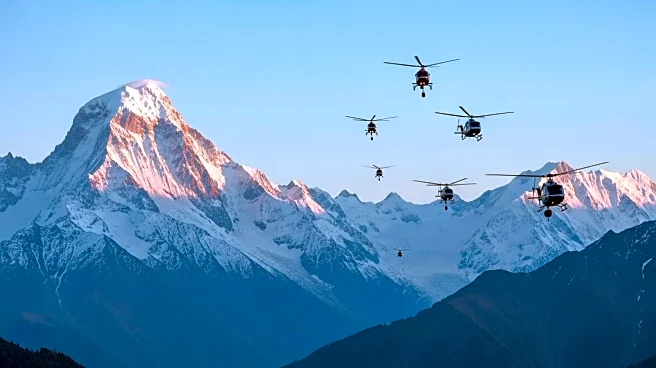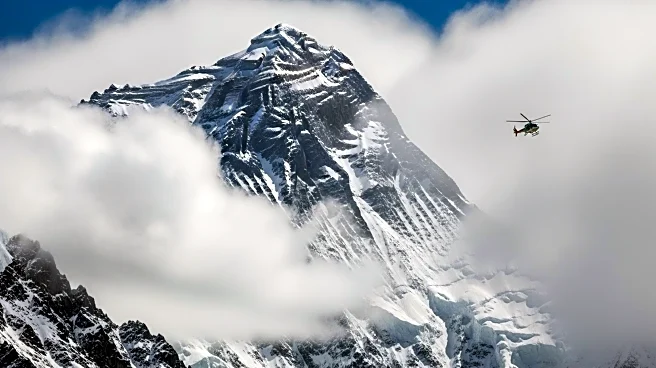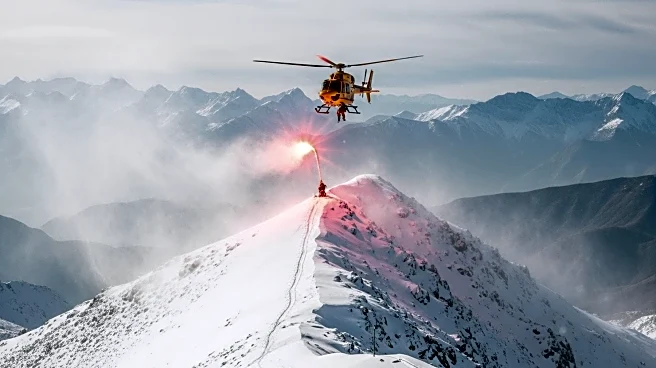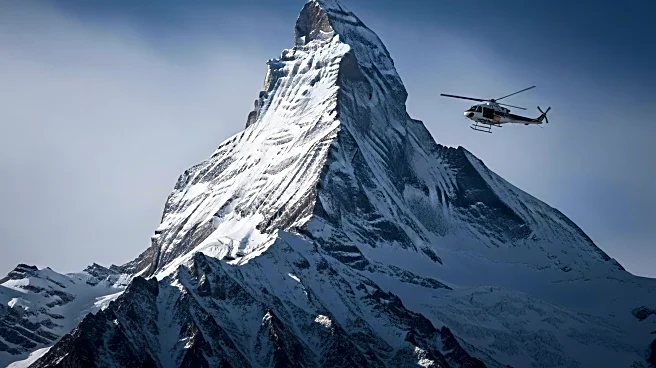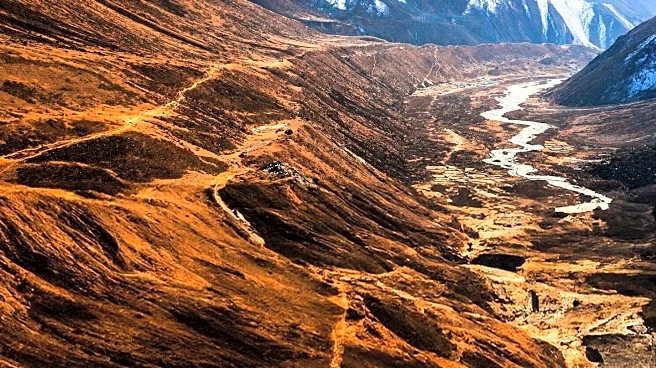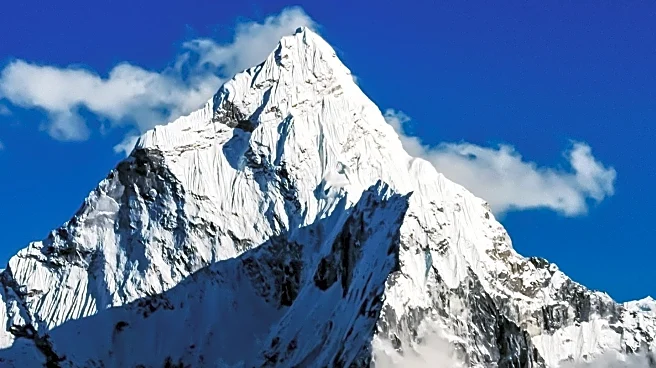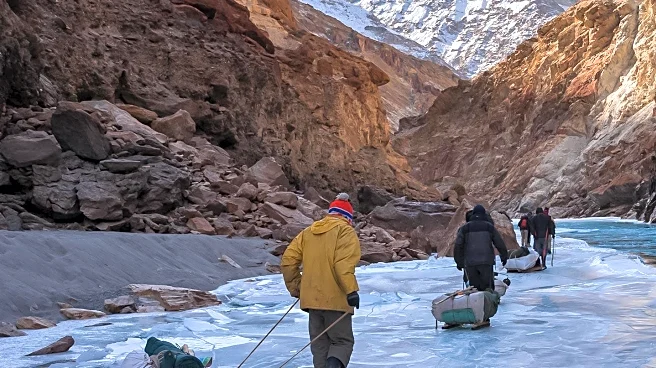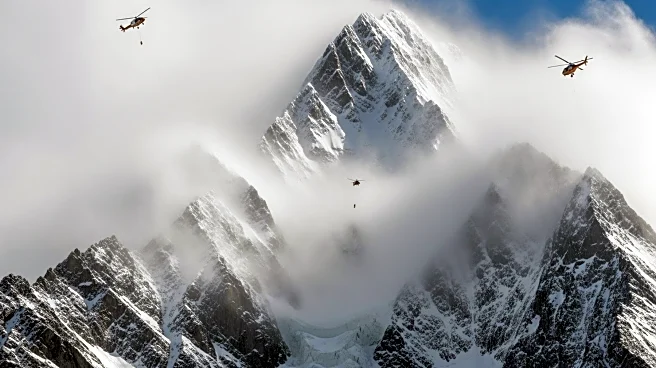What's Happening?
Rescue operations are currently underway to assist hundreds of hikers trapped by heavy snowfall on Mount Everest's slopes in Tibet. According to Chinese state media, approximately 350 hikers have reached a meeting point in Tingri County, while rescuers are in contact with another 200 individuals. The hikers were caught at an elevation exceeding 16,000 feet, with reports indicating that the snow reached depths of three feet, crushing tents and posing significant risks of hypothermia. The snowstorm coincided with a national holiday in China, leading to increased travel and outdoor activities. Rescue teams, including hundreds of personnel, have been dispatched to clear paths and facilitate the safe descent of those stranded.
Why It's Important?
The situation highlights the unpredictable and severe weather conditions that can occur in high-altitude regions, posing significant risks to hikers and climbers. The incident underscores the importance of preparedness and the challenges faced by rescue operations in remote and harsh environments. The heavy snowfall and subsequent rescue efforts could impact tourism in the region, as Mount Everest is a popular destination for both climbers and tourists. Additionally, the event draws attention to the broader implications of climate variability and its potential effects on outdoor activities and safety.
What's Next?
Rescue operations are expected to continue as authorities work to ensure the safety of all individuals trapped by the snow. The focus will be on clearing paths and providing necessary aid to those affected. The incident may prompt a review of safety protocols and emergency preparedness measures for future expeditions in the region. Stakeholders, including local authorities and tourism operators, may need to reassess risk management strategies to prevent similar occurrences.
Beyond the Headlines
The event raises questions about the impact of climate change on weather patterns in high-altitude regions, potentially leading to more frequent and severe weather events. It also highlights the need for international cooperation in rescue operations, as Mount Everest straddles the border between China and Nepal. The incident may influence future policies regarding tourism and environmental conservation in the area.

